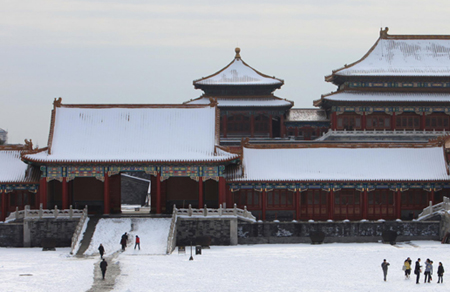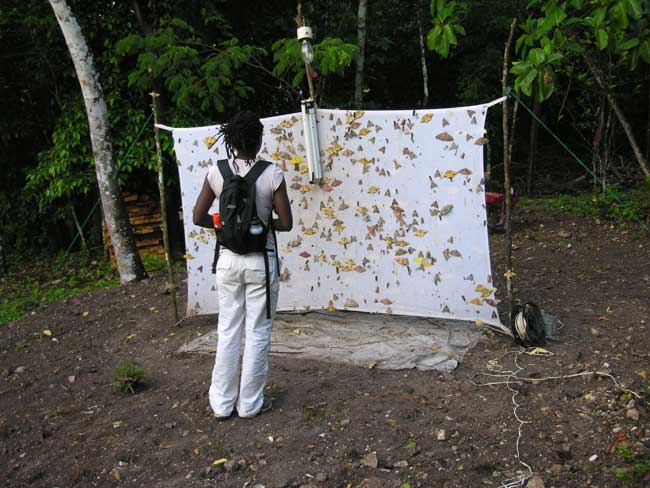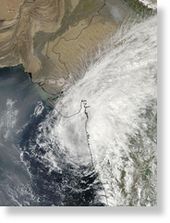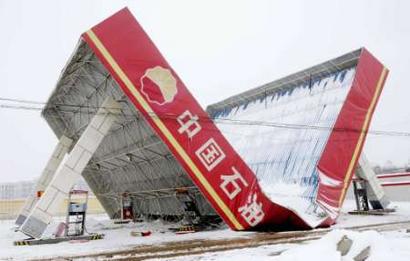
© Xinhua Visitors walk at Forbidden City on a snowy day in Beijing November 10, 2009.
The snow fell amid lightning and thunder in the capital late Monday to early yesterday, making it the second snowfall in eight days.
"The occurrence was rather unusual for early November," said Sun Jisong, chief forecaster of the Beijing Meteorological Bureau.
An official from the capital weather modification office who refused to be identified told
China Daily yesterday that the second snow in Beijing
was also artificially induced but refused to reveal further information.On Oct 31, the first snow in the capital city this winter was partly induced by 186 doses of silver iodide, a compound used in cloud seeding. More than 16 million tons of snow fell on the city, Zhang Qiang, director of the municipal weather modification office, said earlier.
Without advance notice, the weather manipulation led to another big mess yesterday in Beijing, with traffic and flight delays.


